Bunnahow
Houses within 15km of this house
Displaying 60 houses.
Houses within 15km of Bunnahow
Displaying 60 houses.
| House name | Description | |
|---|---|---|
| Raheen | Raheen is associated with both the Kilkelly and O'Hara families. In the 1770s it seems to have been a residence of the Taylor family, with whom the O'Haras intermarried. In the 1830s the OS Name Books record it as "a neat house, in form like a cottage two stories high." Raheen House was badly damaged by fire in the latter part of the twentieth century. The entrance gateway is still extant. |

|
| Coole | Coole House was built in the late 18th century for Robert Gregory. It was demolished in 1941 but the gardens and some of the parkland are still extant and maintained by the Forestry and Wildlife Service. Part of the farm buildings now houses an interpretive centre and tea rooms. See www.coolepark.ie |

|
| Lough Cutra (Lough Cooter) | In 1814 Loughcooter was the residence of C. Vereker, MP while Lewis records it as the seat of Viscount Gort. In the 1850s it was owned by Viscount Gough and was valued at £80. In 1906 it was still in the possession of Lord Gough when the buildings were valued at £300. Lough Cutra is still extant and occupied. A restoration programme is underway since 2000 and the castle is now available as an event location. Some of the stable yard has been converted into holiday cottages. See www.loughcutra.com. |

|
| Prospect (Kiltartan) | Occupied by A. Nolan in 1814. Lewis records Prospect as the seat of Nolan in 1837. By the time of Griffith's Valuation it appears to have been part of the estate of the representatives of Vicesimus Knox and leased to William Mulville. The house is still extant and occupied. |
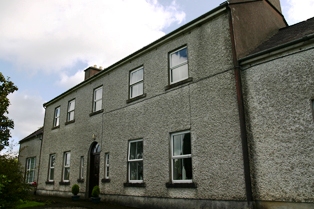
|
| Ashfield House | The house at Ashfield seems to have been known as Clooneene, particularly when it was the home of the Blake Forster family. In 1814 it was the home of Francis Blake Forster but by 1837 Lewis records it as in the ownership of D. McNevin. Earlier, in 1786, Wilson wrote that it was the seat of Mr. Forster. Ashfield House is demolished but substantial parts of the walled garden and the gate lodge are still extant. |

|
| Ballygeagin House | In 1837 Lewis lists Ballygaggen as a residence of the Butler family. Timothy Killeen was renting the house in the townland of Ballygaagin, barony of Kiltartan, from Robert J. Lattey in 1855 when it was valued at £10. Though buildings still exist at the site the original house is not extant. | |
| Cregg House | The house at Cregg seems to have been built by Francis Butler in the 18th century. Wilson refers to it as the seat of Mr. Butler in 1786. In 1814 it was the residence of Walter Butler and Lewis also records it as a Butler house. At the time of Griffith's Valuation it was occupied by Robert J. Lattey and was valued at £25. This also included the premises known as Cregg Cottage which was located in the demesne. In 1906 it was owned by Robert Thomas Lattey and was valued at £33. The original house is no longer extant. |
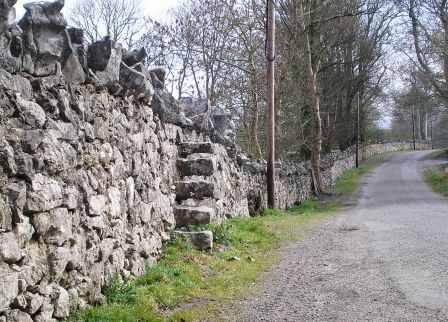
|
| Rosepark House | Tradition suggests that Francis Blake Forster let Clooneene (Ashfield) and built a house which he called Rosepark, after his wife, Rose Ffrench. Rosepark House is recorded by Lewis in 1837 as the seat of the Hugo family. It was leased by Michael Kane to George Crowe at the time of Griffith's Valuation. It was then valued at £12. Apart from some estate walls there is no evidence of this property now. | |
| Castle Lodge/Fiddane House | At the time of Griffith's Valuation the property at Fiddaun was occupied by Edward Blacquiere and was valued at £10. Castle Lodge is recorded as the home of Charles Lopdell in 1814. In 1837 Lewis also recorded it as a seat of the Lopdell family. It is labelled Castle Lodge on the 1st edition Ordnance Survey map but as Fiddane House on the later 25-inch map of the 1890s. It is still extant and occupied. |
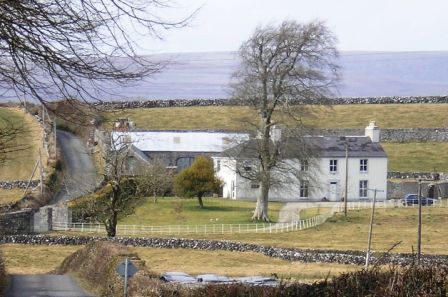
|
| Cloon | In 1814 Cloon House is recorded as the seat of B. Eyre. Lewis records the house as that of Burke Eyre in 1837. At the time of Griffith's Valuation Cloon House was occupied by Henry Lahiff when it was valued at £15. It is still extant and occupied by his descendents. |
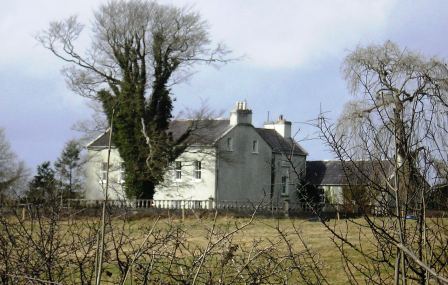
|
| Russaun (Russane) | Russaun, sometimes spelt Russane, appears to have become part of the Gregory estate, though occupied by the Bagot family, by the mid-19th century. At the time of Griffith's Valuation it was leased by William Gregory to John Bagot. However, in 1837 it was recorded by Lewis as the residence of the Lahiffe family. It is still extant and occupied. |

|
| Ballyturin | At the time of Griffith's Valuation Ballyturin House was the residence of John Bagot. In 1906 John C. Bagot was the owner of the house which was valued at £17. It was located in a commanding position overlooking rolling countryside. In May 1921, an RIC man (District/Inspector Cecil Blake), his wife and two British Army officers (Capt Cornwallis and Lt McCreery) were killed in an ambush by South Galway/East Clare Irish Volunteers at the gates of Ballyturin House. Margaret, Mrs Robert Gregory of Coole Park (Lady Gregory's daughter-in-law) escaped without injury. Ballyturin is now a ruin. |
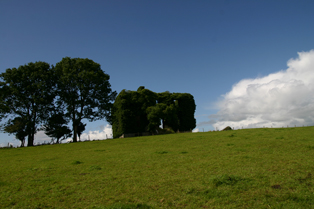
|
| Normangrove | In the 1850s the house at Normangrove, in the Kinvara area, was being leased by John O'Hara to Charles Higgins. In 1814 it had been recorded as the residence of John Burke and was also listed as a Burke house by Lewis in 1837. In 1906 Miss M.L. Forster held over 500 acres of untenanted land here as well as buildings valued at almost £3. The Forsters had held land at Normangrove at the time of Griffith's Valuation but no buildings. O'Connell states that the house was occupied until about 1914 and it fell into ruin therafter. The entrance and driveway lead to a farmyard and there is no trace of the house now. | |
| River View | River View was recorded as a seat of the Lopdell family by Lewis in 1837. By the time of Griffith's Valuation it was owned by the representatives of Vicisimus Knox and was being leased by the Vereker estate when it was valued at £5. It is now in ruins. | |
| Rosemeade/Lisheen | At the time of Griffith's Valuation this property was leased by Matthew Rosengrave to Patrick Carrick and valued at £21. It was accompanied by over 200 acres. In 1814 Lisheen was the seat of Jer. Rosingrave. The house is labelled on both the first and 25-inch editions of the Ordnance Survey map as Rosemeade but today is known as Lisheen. It is still extant and occupied as a farm house. |

|
| Ballymantan/Ballynamantan | At the time of Griffith's Valuation Ballynamantan was leased by Edward J. Hunt to Francis J. Davys. It was then valued at £15. Lewis records the house as the seat of Lombard Hunt. An occupied house still exists at the site though it is not the original. |

|
| Rosehill | The house at Rosehill is included in the sale of the estate of Denis Boland of Gort, in the Land Judges' Court, in the 1880s. It appears on the 1st editon Ordnance Survey map but is not marked on the 25-inch edition of the 1890s. An old entrance gateway survives. |

|
| Lavally (Kiltartan) | At the time of Griffith's Valuation, the representatives of Vicesimus Knox were leasing property valued at £47, including a mill,to John Langan, at Lavally, barony of Kiltartan. This building is no longer extant. | |
| Lisbrine House | At the time of Griffith's Valuation, Lisbrine was the residence of Richard Burke and was valued at £12. By 1906 it was owned by John Burke and was valued at £11 while a smaller house, valued at £6, was owned by Myles Burke. Lisbrine House is no longer extant. | |
| Ballylee Castle | Lewis records the Carrig family as residennt at Ballylee Castle in 1837. At the time of Griffith's Valuation, Patrick Carrick was leasing a herd's house, old castle and land from William Gregory at Ballylee, barony of Kiltartan. The property was valued at £5 at the time. In the early century Ballylee Castle was bought and renovated by the poet, W.B. Yeats. After falling into disrepair again it was acquired by the Office of Public Works as a museum to the poet. It was severely damaged by flooding in 2009 and is not currently open to the public. |

|
| Rindifin Cottage | In 1786 Wilson refers to Rhyndifen as the seat of Prendergast Smyth. Lewis records Rhyndifin as the seat of the Blaquiere family in 1837. It was occupied by Mary Moloney at the time of Griffith's Valuaiton, leasing from the Knox estate and was valued at £4. The entrance gateway is extant and a house still occupies the original site. |

|
| Annagh Cottage (Kiltartan) | In 1786 Wilson refers to Annagh as the seat of Mr. Burke. Redmond Burke is recorded as residing at Annagh in 1814. The house at Annagh, barony of Kiltartan, was occupied by Redmond Burke at the time of Griffith's Valuation, when it was valued at £10. Redmond Burke of Annagh, sold property in the Land Judges' Court in 1882. Annagh Cottage does not appear on the 25-inch Ordnance Survey map of the 1890s and no trace remains of it now. | |
| Forthill Cottage | Lewis records a Burke family resident at Forthill in the parish of Kilbeacanty in 1837. By the time of Griffith's Valuation the holding was being leased by Michael Diviney from William Gregory. The house was valued at £2 but was vacant at that time. It is no longer extant. | |
| Lydacan Lodge | Lydacan Lodge is recorded in the OS Name Books as the residence of John O'Hara. On the 1st edition OS maps the house is recorded as Lydacan Lodge. At the time of Griffith's Valuation Lydacan is recorded as the property of James O'Hara where he held a herd's house and 200 acres. | |
| Derrykeel | Derrykeel was the property of the Barry family in the nineteenth century. At the time of Griffith's Valuation it was the property of Smith Barry. There was a house on the property valued at 10s as well as 500 acres. | |
| Chevy Chase Cottage. | William Arthur Persse was the owner of a house valued at almost £10 at Laherdaun in 1906. It had been the property of Dudley Persse at the time of Griffith's Valuation. It was probably used mainly as a hunting lodge due to its remote location. Ruinous fragments remain, surrounded by state forestry. |
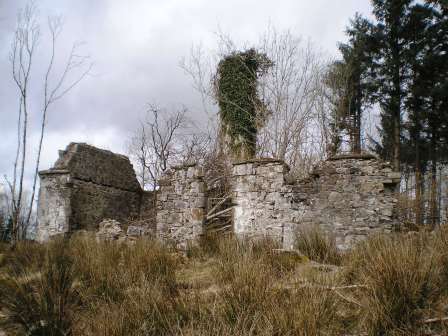
|
| Tiraloughan | In 1906 Lord Gough owned a property valued at almost £4 at Tiraloughin, parish of Beagh as well as over 100 acres of untenanted land. A house still exists at this location. | |
| Garryland | Garryland was an extensive wooded area, part of the Shawe-Taylor estate in the parish of Kilmacduagh, barony of Kiltartan. At the time of Griffith's Valuation and also in 1906 buildings to the value of £10, including a wood-ranger's house, were located here. These buildings are now in ruins but substantial areas of woodland remain and are now maintained by the Forestry and Wildlife Service. | |
| Rockview | In the possession of the O'Loghlens for most of the 19th century. John Kerin occupied the house in 1814, R. O'Loghlen in 1837 and Bryan O'Loghlen at the time of Griffith's Valuation. A house is still extant at this site. | |
| Derryowen | A home of a branch of the Lopdell family in the 19th century held in fee and of their descendants the Blaquieres in the late 19th and 20th centuries. In July 1889 the notice announcing its proposed sale in the Land Judges' Court describes it as "a very good newly-built dwelling-house, with suitable out-offices". There is still an occupied house at the site. | |
| Rathorp | Lewis records Ratope as the residence of the late J. Foster. At the time of Griffith's Valuation it was in the possession of Patrick Geoghegan who held the property from the Marquess of Thomond and 526 acres. The house was valued at £7.10 shillings. A house still exists at the site. |
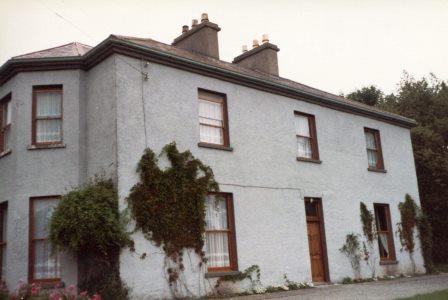
|
| Rockforest | A home of Bindon Blood throughout the first half of the 19th century and later of his son, Bagot Blood, who died in 1897. It was held in fee by Bindon Blood at the time of Griffith's Valuation, when it was valued at £12. The house shown on the 1st edition Ordnance Survey map was replaced by a later house a short distance away. A house is still extant at this site. | |
| Rockvale | Originally a D'Arcy home, built in the 1780s. Rockvale was the home of J. D'Arcy in 1837. By the time of Griffith's Valuation the house was occupied by John Mullins and valued at £7. 10 shillings. Mullins was leasing from the Marquess of Thomond. It is labelled Rockvale House (Constabulary Barracks) on the 25-inch Ordnance Survey map of the 1890s and is now a ruin. |
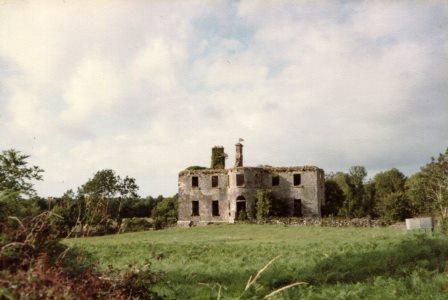
|
| Cooga | A house on the O'Callaghan estate, inhabited by the Lingard family from at least 1837. Sold by the Lingards to the Hogans in 1922. | |
| Dromore | Occupied by Jonas Studdert, third son of Richard Studdert of Clonderalaw, in 1814. In 1795 Jonas married Mary Crowe of Dromore. The home of R. Crowe in 1837. Originally a hunting lodge Dromore became the main residence of the Crowes in the 1830s. The house was sold in 1936 and is now demolished. |
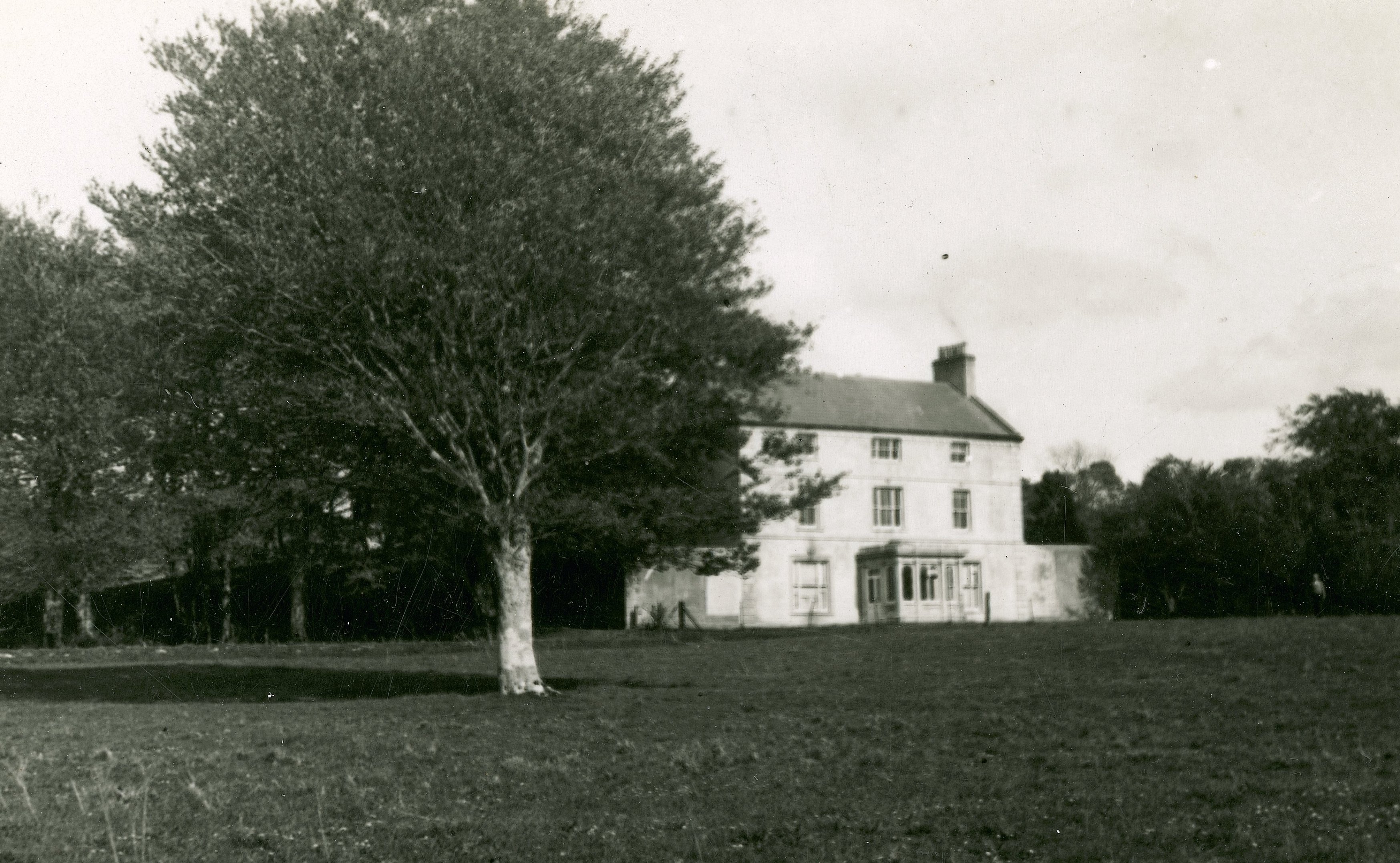
|
| Port | Home of the O'Loghlens in the latter part of the 18th century and first part of the 19th century. Hugh O'Loughlin was resident in 1814 and in 1837. The house was unoccupied at the time of Griffith's Valuation. Weir writes that the house and demesne were purchased by Jeremiah Kelly in the 1860s. |
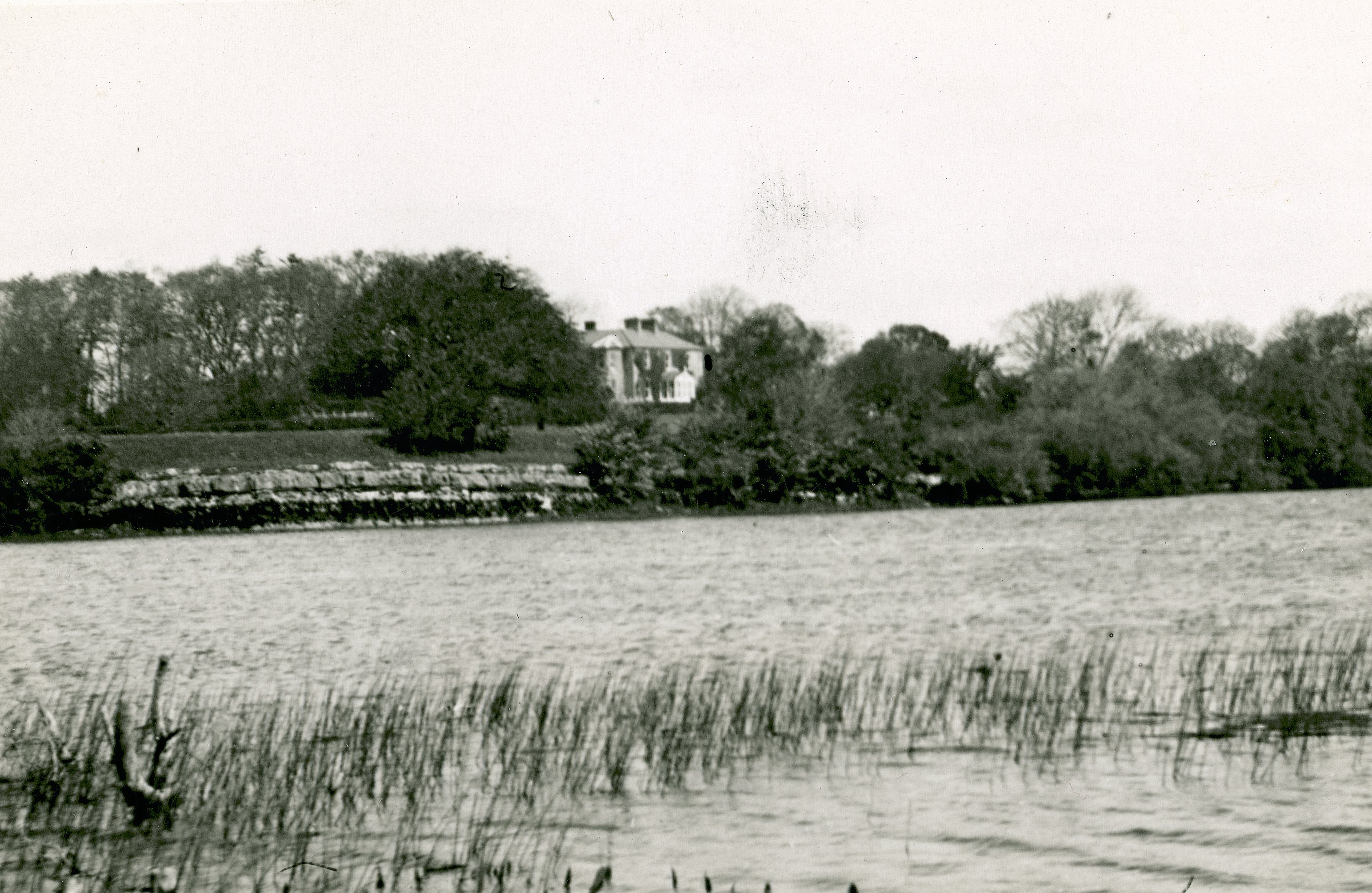
|
| Teernea | Hewitt Bridgeman, Member of Parliament for county Clare, lived here in 1837. By the time of Griffith's Valuation Myles O'Brien was leasing the house from Henry Dwyer. It was then valued at £8.10 shillings. | |
| Cranagher | Originally a Bindon home this property passed to the Blood family through a marriage in the 1770s. In 1814 it was occupied by Mr James Kerin and in the mid 19th century by Giles Darcy who held it from William Blood. The house was valued at less than £2. There is a substanial house and demesne marked on the first Ordnance Survey map at Cranagher. Weir writes that a new house was started sometime in the 19th century a short distance from the original but was abandoned before completion. General Sir Bindon Blood sold Cranagher in 1905. Some farm building and modern houses exist at the site now. | |
| Castletown House | The original house is now demolished and a 20th century house stands on the site close to an old Macnamara castle. The house was occupied by Francis Macnamara in 1814 and by Robert Malcolm in the mid 19th century who held it from Colonel George Wyndham. It was valued at £10. | |
| Ballyline | Weir writes that this house was also known as Millbrook. It was occupied by Henry Butler in 1814 but had reverted back to another branch of the family by 1837 when Austin Butler was the proprietor. Austin Butler held the house in fee at the time of Griffith's Valuation, when it was valued at £15. The representatives of Theobald Butler held the house and 428 acres of untenanted land in 1906. The house was demolished by the Land Commission before the 1940s and the land divided. | |
| Ballyallia | An 18th century house, occupied by Andrew Kerin in 1814. It then became the home of Andrew Stacpoole and was owned by William Stacpoole in fee in the mid 19th century when the buildings, which included a house, steward's house, office and gate lodge, were valued at over £41. By the end of the 19th century the Vere O'Briens were living in the house. The house was considerably altered in the 1970s. | |
| Cloonteen | A house in the townland of Cloonteen is named Ballyallia on the first Ordnance Survey map. It was valued at £30 and was held by John Enright in fee at the time of Griffith's Valuation, now a ruin. Weir called this residence Templemaley House, the name by which it is labelled on the 25-inch map of the 1890s. | |
| Nutfield | A large three storey residence, Nutfield belonged to the Crowe family at the end of the 18th century and up to at least 1814 when it was the residence of Robert Crowe. Wilson refers to it and another house, which he calls Dromquin, as residences of the Crow family. He may be referring to Dromore House. By the mid 19th century Nutfield was the home of Sir Colman O'Loghlen who held it in fee. The buildings were valued at £40. The house is no longer extant. This house was also known as Drumconora. On the Taylor and Skinner map of 1778 it is named Nutgrove. | |
| Clooney House | Originally a 17th century house, the home of the Bindon family, it was burnt in the 19th century. Lewis refers to "Clonie, the demesne of Burton Bindon" in 1837. At the time of Griffith's Valuation the house was unoccupied and William S. Vesey Fitzgerald was the immediate lessor. Rebuilt in the latter half of the 19th century by Joseph Hall and his wife Ellen Bindon. The house was bought by the Tuckeys following the death of Joseph Hall in 1907, the land was divided in the 1920s and the house went to ruin. |
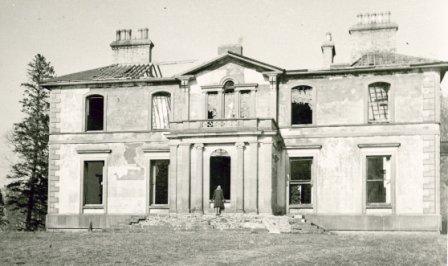
|
| Ayle | The home of a branch of the Macnamara family in the 18th and 19th centuries. It was advertised for sale in 1850 and Griffith's Valuation records Joseph Browne as the occupier. He held the property in fee, the buildings were valued at £14. Weir writes that the original house was demolished and that the house now standing which was occupied by the Walshes, agents to the Macnamaras, was uninhabited. see http://www.thisoldhouse.com/toh/article/0,,568230,00.html | |
| Knockbeha Cottage | A house situated on the Molony estate at the time of Griffith's Valuation. occupied by John McArthur and valued at £16. Weir writes that it was used as a shooting lodge and an R.I.C. barracks. A modern house has been erected on the site. Another house is also marked on the first Ordnance Survey map 1842 at R575 910. | |
| Newgrove | Home of the Browne family in the 18th century and for the first half of the 19th century. In the 1850s this 18th century house, valued at £30 was in the possession of Eliza Browne, widow of Thomas Browne of Newgrove who died in 1847. Mrs Browne died in 1864 and the house and estate passed to the Brady family. Only some walls of the house remain. |

|
| Bunavory | A house on the Molony estate, occupied by William Scanlan in the 1850s. The house is now divided into two residences. | |
| Cragg | Home of a branch of the Molony family from the 1730s to the early 20th century. The house is still extant and lived in. It was valued at over £14 in the mid 19th century when it was held by Anne Molony in fee. | |
| Kiltanon | Kiltanon was the home of the Molony family for at least two centuries. The house built in 1833 had a drive which linked it to the other nearby Molony residences at Bunavory and Cragg. The house was burnt in September 1920 and is now a ruin. In the second half of the 19th century another house, known as the Home Farm House, was built at Kiltanon for Marcus Molony, eight son of James Molony and his agent. This house is still extant. |

|
| Nutgrove Cottage | Another Molony house in the townland of Kiltanon, occupied by James Robb at the time of Griffith's Valuation, when it was valued at £20, now a ruin. | |
| Maryfort | An early 18th century house with late 19th century embellishments, home of the Westropps. By the early 19th century it was occupied by John O'Callaghan (died 1818) who seems to have moved there from Kilgory. Occupied by his grandson John O'Callaghan at the time of Griffith's Valuation, valued at £35 and held from George Westropp. In the 20th century it was the home of his son Colonel George O'Callaghan who assumed the additional name of Westropp. Weir writes that the house was demolished in 1967 by Colonel Conor J. O'Callaghan Westropp, the last member of the family to live there. |
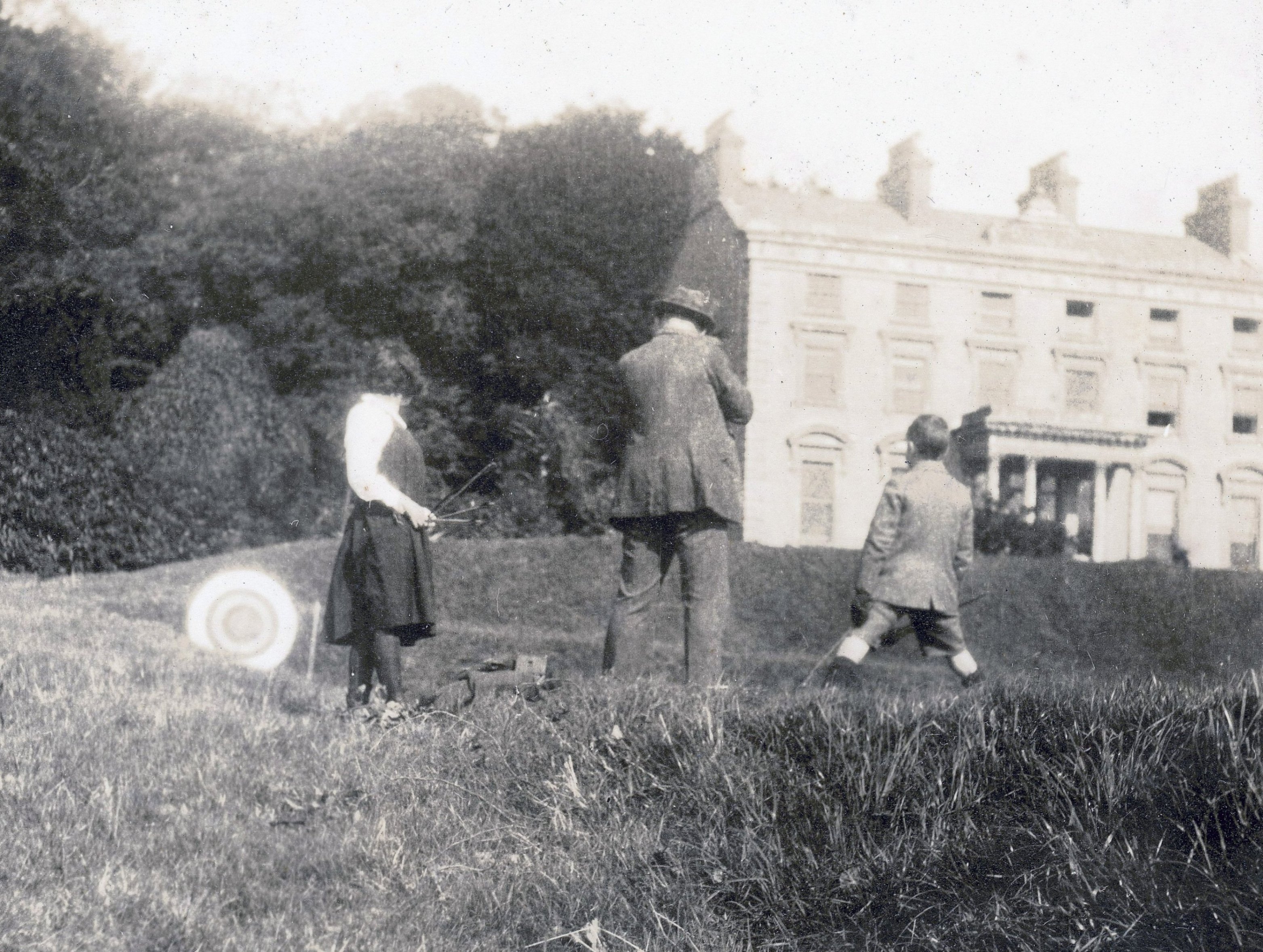
|
| Tyredagh Castle | Built by at least 1814 when it was occupied by Thomas Brown who in that year married Elizabeth Comyn. In 1837 Mrs Browne was in residence. By the time of Griffith's Valuation Mary Gore was the occupant holding the property from Eliza Browne. Weir writes that the house was accidentally burnt down about 1903. | |
| Doon | This is the property also known as Doonemulvilhill where James Butler settled in 1684. The Butlers lived here during the 18th and early 19th centuries. By the 1850s however Edward Galway was living in the house and held the townland from George Wyndham. A modern house now occupies the site. | |
| Glencolumbkille House | This was an O'Brien home from at least the late 18th century. In 1837 Lewis described Columbkill Cottage as the "neat residence" of Terence O'Brien esq. Griffith's Valuation records Mary Anne O'Brien (the widow of Terence) as the occupier holding the property from John Kirwan. The buildings were valued at over £10. In the 1870s Morty O'Brien of Glencolumbkille owned 396 acres in county Clare. This is house is no longer extant. | |
| Trinaderry | A house erected in the 1870s as the residence of Andrew Enright. It is labelled Trinaderry House on the 25-inch edition Ordnance Survey map of the 1890s. A house and farm are still extant at this site. | |
| Caher | Situated close to the shore of Lough Graney, sheltered by trees this house is well maintained and occupied. It was leased by the O'Haras to the Studderts in the 1830s. At the time of Griffith's Valuation William O'Hara, one of the seven sons of Robert O'Hara of Raheen, was the occupier. He held the house valued at £24 and surrounding 255 acres from [his mother] Frances O'Hara. Purchased by the O'Dwyers in the early 20th century. |

|
| Cappagh House | At the time of Griffith's Valuation occupied by John Curtin, valued at £12+ and held from the representatives of Stratford Kirwan. The house is no longer extant. | |
| Glenwilliam | The residence of James Blake Butler in 1837. Occupied by John McNamara in the early 1850s and held from Lord Fitzgerald and Vesci when it was valued at almost £5. Still extant and occupied. | |
| Garruragh House | In 1786 Wilson refers to "Garuragh" as the seat of Mr. Harrison. At the time of Griffith's Valuation, the house was part of the O'Callaghan estate but leased to the Tulla Board of Guardians as an auxiliary workhouse when the buildings were valued at £48. It is labelled Garruragh House on both the 1st edition and 25-inch edition Ordnance Survey maps though much of the buildings have disappeared by the 1890s and only some ruins remain now. |

